The success of outsourcing dental implant work overseas now hinges on a lab’s digital capabilities. From CAD/CAM integration to intraoral scan compatibility and advanced AI-driven tools, digital workflows shape the accuracy of restorations, turnaround time, and overall remake rates. Labs without strong digital systems risk communication delays, file errors, and regulatory setbacks that compromise both efficiency and trust.
The most critical areas to evaluate include:
- Core Workflows: seamless CAD/CAM integration, STL/PLY file handling, and access to validated implant system libraries.
- Advanced Technology: 3D printing for speed and precision, AI-supported margin detection, and cloud platforms for real-time collaboration.
- Risk Control: standardized digital QA systems, secure file management, and compliance with dental regulations.
- Procurement Evaluation: targeted supplier questions, test case validation, and clear indicators of digital innovation readiness.
By focusing on these benchmarks, procurement leaders can choose overseas implant labs that not only ensure predictable quality but also support long-term clinical efficiency and business growth.
Why Do Digital Capabilities Matter When Outsourcing Dental Implants?
Digital capabilities matter in implant outsourcing because they directly determine the accuracy of restorations, the efficiency of production, and the consistency of outcomes across borders. When a lab is digitally integrated, communication becomes seamless, remake rates drop, and the supply chain works more predictably. Without these capabilities, clinics often face costly delays, unpredictable quality, and frustration that undermines trust in cross-border collaboration
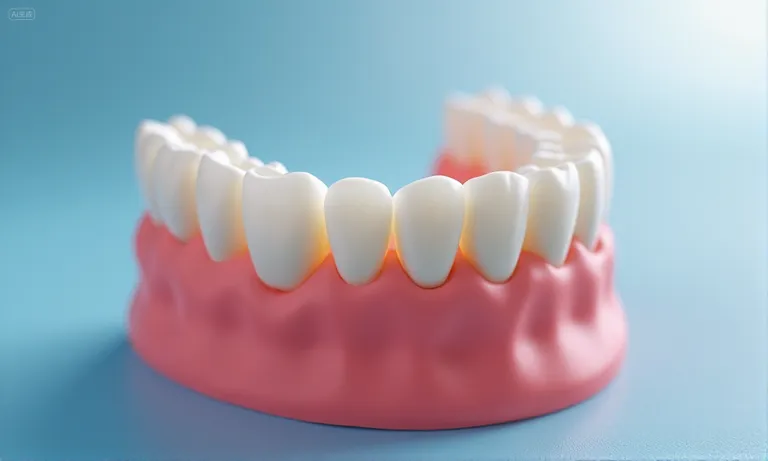
dental-lab-digital-quality-check
How do digital workflows improve accuracy, efficiency, and remake rates?
Digital workflows eliminate the variability of manual steps and reduce miscommunication between clinics and labs.
- Accuracy: Intraoral scans directly feed into Digital dentistry and technology resources at the ADA, reducing distortion from impressions.
- Efficiency: Digital case transfer cuts shipping time, accelerating turnaround.
- Remake reduction: Consistency in digital libraries and software alignment means fewer errors.
A clinic in Sydney, for instance, reported cutting remake requests by almost 30% after its supplier lab switched fully to CAD/CAM integration.
What risks arise when labs lack CAD/CAM and digital integration?
Labs without strong digital systems often introduce hidden costs.
- Remakes increase due to mismatched margins or occlusion.
- Delivery delays occur when physical models are lost or damaged in transit.
- Communication suffers if design files cannot be exchanged in real-time.
These issues erode trust and make overseas outsourcing less cost-effective, even if unit prices appear lower.
How does automation and AI-supported QC enhance consistency?
Automation and AI-driven checks bring a new level of predictability.
- Automated margin detection improves fit by minimizing technician subjectivity.
- AI QC algorithms flag potential design anomalies before milling.
- Data-driven analysis allows labs to spot patterns in recurring errors.
For overseas clinics, this means restorations arrive with reliable quality standards (ISO 13485),, not depending solely on technician skill on any given day.
When outsourcing dental implants, digital capabilities are not just “nice to have” but essential risk controls. Overseas dental labs that adopt digital workflows and AI-supported quality checks help clients minimize remakes, improve turnaround reliability, and build long-term trust across time zones and borders.
What Core Digital Workflows Should an Overseas Dental Lab Support?
The most reliable overseas dental labs are those that fully integrate CAD/CAM, file compatibility, and digital libraries into their workflows. These systems are the foundation of efficient collaboration, because they allow data to move smoothly from clinic to lab without distortion or loss. For buyers, confirming that a lab supports these digital workflows is the single most effective way to avoid costly remakes and ensure predictable turnaround.
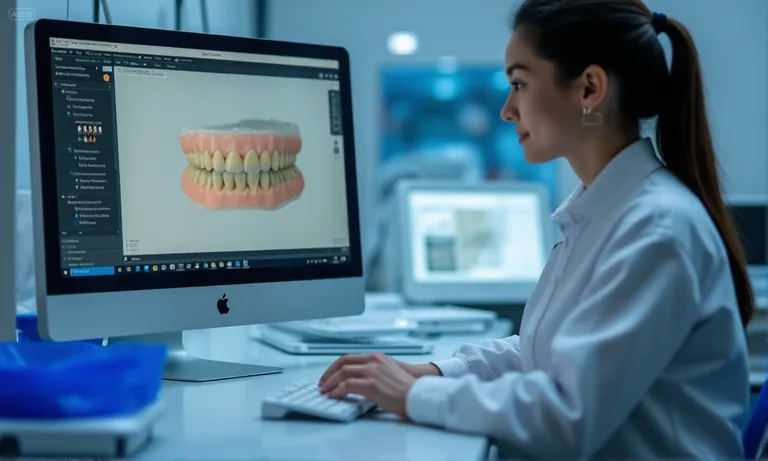
dental-lab-cadcam-digital-integration
Why is CAD/CAM integration essential for implant restorations?
CAD/CAM ensures that restorations are digitally designed and milled with high precision.
- Fit accuracy: Margins and occlusion are modeled before production, minimizing adjustments at delivery.
- Scalability: High volumes can be produced without compromising quality.
- Consistency: Every crown or bridge follows the same design rules, reducing technician variability.
For implant restorations where microns matter, CAD/CAM is not optional—it is the baseline of predictable quality.
How does STL/PLY and intraoral scan (IOS) compatibility affect collaboration?
File compatibility is one of the biggest pain points in outsourcing. If a lab cannot open or process a clinic’s IOS files, delays and remakes are inevitable.
| File Type | What It Includes | Why It Matters in Outsourcing |
|---|---|---|
| STL | Geometry only | Standard for most CAD software, ensures basic shape accuracy |
| PLY | Geometry + color/texture | Important for matching shade and gingiva details |
| IOS Native Files | Proprietary scan formats | Must be supported to avoid extra conversion steps |
A lab fluent in these formats saves clinics hours of troubleshooting and prevents the loss of data detail during file conversion.
What value do digital implant libraries and design databases provide?
Digital implant libraries allow labs to reference exact components from major implant brands during design.
- Precision: The correct abutment or scan body can be chosen with one click.
- Speed: Designers do not waste time searching for compatible parts.
- Reliability: Using standardized libraries ensures compatibility with the clinic’s chosen implant system.
One European distributor confirmed that their remake rate dropped significantly once their partner lab began using updated digital libraries synced with implant manufacturers’ databases.
Labs that can demonstrate robust CAD/CAM, file compatibility, and digital libraries are far better positioned to support cross-border implant work. For clinics, this means smoother collaboration and fewer surprises when restorations arrive.
How Do 3D Printing, AI, and Cloud Platforms Improve Overseas Lab Collaboration?
Advanced technologies like 3D printing, AI-driven design, and cloud-based platforms transform how overseas dental labs work with clinics. They shorten turnaround, improve restoration fit, and make cross-border communication smoother. Clinics that partner with labs using these tools experience fewer delays, more predictable quality, and better visibility throughout the case.
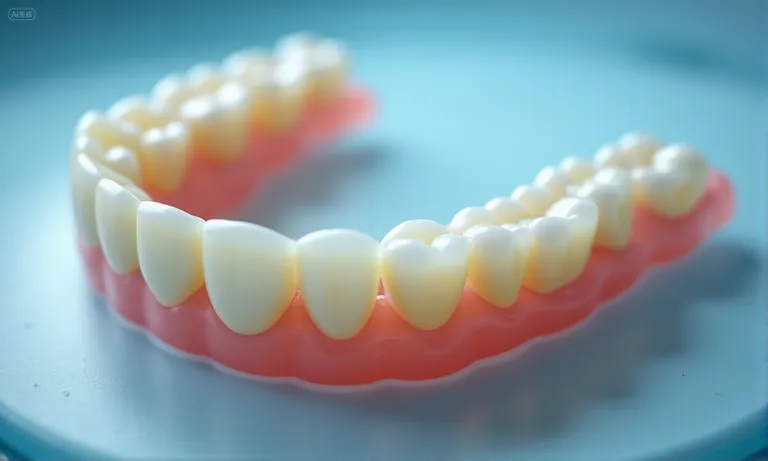
Image
ALT: dental-lab-3dprinting-ai-cloud
Prompt:
A highly realistic, ultra-detailed, professional-quality photo captured in a clean, well-lit dental lab environment. Materials must be photorealistic, anatomically accurate, and rendered with DSLR-level clarity. Lighting should be soft daylight or studio white light, avoiding cold or bluish clinical tones. Each tooth showing slight variation in contour, size, and cusp height, with natural occlusal grooves, realistic contact points, enamel translucency, and subtle shade gradient from incisal edge to cervical area; microscopic surface texture and slight asymmetry typical of natural dentition.
→ A Chinese dental technician is operating a desktop 3D printer producing implant models, while a second screen displays AI-driven margin detection software, and a cloud collaboration dashboard is visible in the background.
What role does 3D printing play in implant prosthetics production?
3D printing accelerates the production of surgical guides, implant models, and temporary restorations.
- Speed: Prototypes can be printed within hours instead of days.
- Accuracy: Printed models replicate scan data with micron-level precision.
- Cost efficiency: Reduced material waste and faster turnaround keep outsourcing competitive.
For overseas outsourcing, this means clinics receive test-fit models or guides quickly, even across long shipping routes.
How does AI-driven margin detection and design improve outcomes?
AI-powered software analyzes scan data and identifies margin lines with greater accuracy than manual input. This reduces technician subjectivity, a common cause of remakes. In one U.S. DSO pilot project, AI detection reduced design revision requests by nearly 25%. With AI supporting technicians, implant restorations achieve a consistent standard of fit, giving clinics greater confidence in cross-border deliveries.
How can cloud-based platforms support real-time communication?
Cloud-based platforms allow clinics and labs to work as if they were in the same room:
- Instant file sharing avoids email delays and version conflicts.
- Case tracking dashboards provide real-time visibility on design, production, and shipping status.
- Collaborative markup tools let clinicians highlight adjustments directly on 3D models.
This level of transparency eliminates the “black box” feeling many clinics report when working with overseas labs.
3D printing, AI, and cloud collaboration are no longer future trends but present-day differentiators. Overseas dental labs that integrate these tools make cross-border work smoother, helping clinics reduce turnaround uncertainty while ensuring predictable outcomes.
How Do Digital Capabilities Help Reduce Outsourcing Risks?
Digital capabilities reduce outsourcing risks by creating quality consistency, secure file handling, and standardized workflows that align with international regulations. Without them, overseas collaborations often suffer from avoidable remakes, miscommunication, and compliance gaps. Clinics that prioritize labs with strong digital QA systems and secure data handling enjoy smoother case flow and fewer surprises.
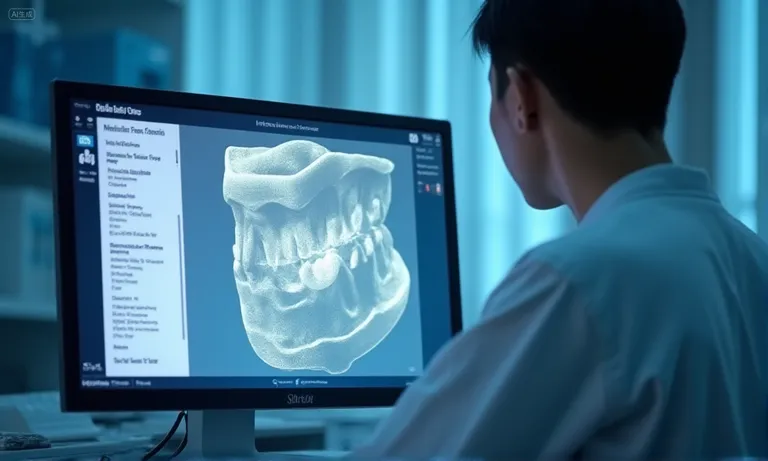
dental-lab-digital-quality-assurance
How do standardized digital QA systems reduce remake frequency?
Digital QA systems embed checkpoints throughout the workflow.
- Automated fit validation: Software verifies margin lines and contact points.
- Calibration records: Milling machines and scanners log performance data for traceability.
- Batch QC reports: Clients receive digital documentation confirming each restoration’s accuracy.
Labs that adopt these systems show significantly lower remake rates, giving clinics more predictable delivery schedules.
Why does secure file handling and Rx clarity matter in cross-border outsourcing?
In outsourcing, clarity of prescriptions and secure transfer of patient data are non-negotiable. If Rx instructions are vague or files are corrupted in transit, the result is confusion, remakes, and potential compliance risks. By using encrypted file platforms and structured Rx templates, overseas labs minimize data loss while protecting patient confidentiality. This builds confidence for clinics that must meet strict HIPAA or GDPR standards in their own regions.
How does workflow standardization support compliance with dental regulations?
Workflow standardization is what ensures that every case, no matter its origin, is processed under the same compliance rules.
| Standardization Element | Compliance Value | Impact on Clinics |
|---|---|---|
| Digital SOPs | Align with ISO and FDA/CE norms | Easier audits and cross-border validation |
| Traceable File Logs | Secure documentation trail | Reduces liability in case of disputes |
| Uniform QC Templates | Proof of consistent quality checks | Increases buyer trust in repeat orders |
For clinics outsourcing overseas, this means peace of mind: regulatory expectations are met, and every case has a documented chain of responsibility.
When overseas dental labs implement digital QA, secure file handling, and standardized workflows, they not only cut remake frequency but also give clinics confidence in regulatory compliance. As an overseas dental lab partner, our role is to align with these expectations and ensure smooth, transparent cooperation across borders.
Buyer’s Guide: How to Check a Lab’s Digital Capabilities Before Outsourcing
Evaluating a lab’s digital capabilities is critical before committing to cross-border outsourcing. Clinics and procurement teams should look beyond pricing and confirm whether the lab can demonstrate proven workflows, deliver test results, and show readiness for digital innovation. A structured evaluation process helps avoid mismatched expectations and long-term inefficiencies.
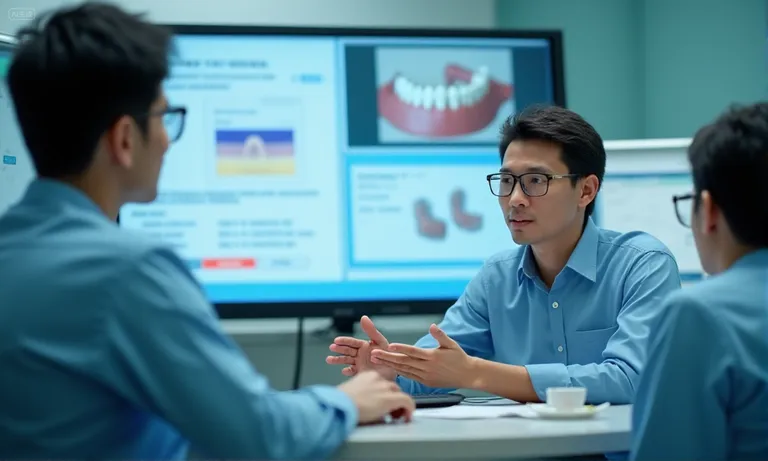
ALT: dental-lab-digital-capabilities-evaluation
What key questions should be asked during supplier assessment?
Procurement teams should focus on questions that uncover real capability, not just promises.
- Can the lab handle STL, PLY, and multiple IOS file types without conversion delays?
- What QA checkpoints are embedded in the digital workflow?
- How often are digital implant libraries updated with manufacturer databases?
- Does the lab provide secure Rx and file transfer systems?
Asking these questions ensures the lab has not just technology but also the processes to support consistent results.
How can sample cases or test orders verify digital workflow quality?
The most reliable way to evaluate is through a structured test order.
- Submit a representative case using your clinic’s IOS file.
- Review the lab’s design preview and check for accuracy in margin and occlusion.
- Confirm the final restoration fit against the original scan data.
- Request a QA report documenting how the case was validated digitally.
This approach allows clinics to see if the lab’s claims hold up in practice, before committing to larger outsourcing volumes.
Which signs show a lab is future-ready for digital innovation?
Future-ready labs demonstrate more than today’s minimum. They invest in emerging tools such as AI-assisted design, 3D printing scalability, and cloud-based collaboration dashboards. In one recent case, a European distributor chose a lab partner because it was already piloting AI-driven margin detection, showing commitment to long-term innovation. Labs that continuously upgrade are better positioned to support clinics as new digital standards become mainstream.
Clinics that evaluate labs with structured questions, test orders, and a focus on future-readiness can outsource with confidence. As an overseas dental lab partner, our role is to be transparent in digital capability assessments and show readiness for continuous innovation.
Conclusion
Outsourcing dental implants to an overseas dental lab is only as reliable as the lab’s digital capabilities. From CAD/CAM precision to secure file handling and AI-supported QA, each capability reduces risks, lowers remake rates, and ensures smoother collaboration across borders. Clinics and procurement teams that evaluate these factors gain predictable outcomes and long-term trust in their supply chain. As an overseas dental lab, our role is to integrate advanced digital workflows and remain transparent in quality reporting, so partners can focus on patient care with confidence rather than worrying about operational setbacks.


